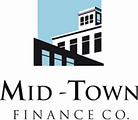Annual Percentage Rates & Personal Loans: A Borrower’s Guide
Personal loans grant individuals some form of financial stability by freeing up debt and meeting needs. However, you have to consider if this will affect your financial situation in the long run since there could be a significant annual percentage rate (APR). It pertains to the sum of interest rates with the extra fees or finance charges. If there are no extra fees, the APR is equivalent to the interest rate. With these added expenses in mind, consider using this guide as your starting point toward being more prepared for your responsibilities as a loan benefactor.
Why Should I Be Wary of APRs on My Personal Loans?
Knowing your APRs is a great way to compare different personal loans, but using the interest rates or monthly payments as reference points is not enough to determine your product’s real price. You may be put in situations wherein there isn’t enough money to pay off outstanding costs. APRs also vary with different providers, so they have their own formulas for computing.
Remember, personal loans operate on a fixed-rate installment scheme, meaning the interest rate won’t change throughout the loan’s term. The rate is based on your credit score, debit-credit ratio, and more, which are also used to calculate the upfront fee. You don’t have control over the APR, but pre-qualification is needed to help you determine the estimated costs without any credit report consequences. So, look into getting pre-qualified and find other means to be careful with your loaning expenses.
How Exactly Do APRs Work for Personal Loans?
Let’s consider an imaginary scenario wherein you want to have a small loan to pay your rent. Suppose two lenders can pre-qualify you for 5,000 dollars, which you must repay after four years. They have the same interest rates, origination fees, and monthly payments since they are going by your credit variables.
For instance, Lender 1’s interest rate is ten percent, and Lender 2’s rate is 11 percent. On the other hand, Lender 1’s origination fee is 150, but Lender 2 is cheaper at 100 dollars. While it may seem like you can go for either option, you should consider the APR. For Lender 1, suppose they give you an APR of 11.6 percent, and Lender 2 only has 10.4 percent. It means that Lender 2’s personal loan is the cheaper and more feasible option.
What Can I Do to Get a Better APR on My Personal Loan?
Most lenders would advise their clients with high APRs to better their credit score since it is still a significant indicator for most computations. However, that is not a one-size-fits-all answer because other lenders use other indicators to give you a fighting chance, like if you have a favorable monthly salary rate. Some may even have better options if you opt for a larger personal loan. All things considered, it is about your professional relationship with a trustworthy personal loan company.
Final Thoughts on Annual Percentage Rates and Personal Loans
Finding a personal loan with favorable computations is necessary because it can affect your financial standing in the long run. Fortunately, you now understand the APR, which is an important factor to consider. Just ensure that you identify with a client-oriented lender like us to look after your best interests.
Are you looking for the best personal and ,installment loans in Nashville, TN? Consult with us at Mid-Town Finance. We make it a point to never be a financial burden to you by offering no payday or title pawn loaning options. Our borrowing process is also quick and simple to ensure the utmost convenience. So contact us today at 615-488-3735 to get your much-needed money to meet your debt payments and other financial obligations.
